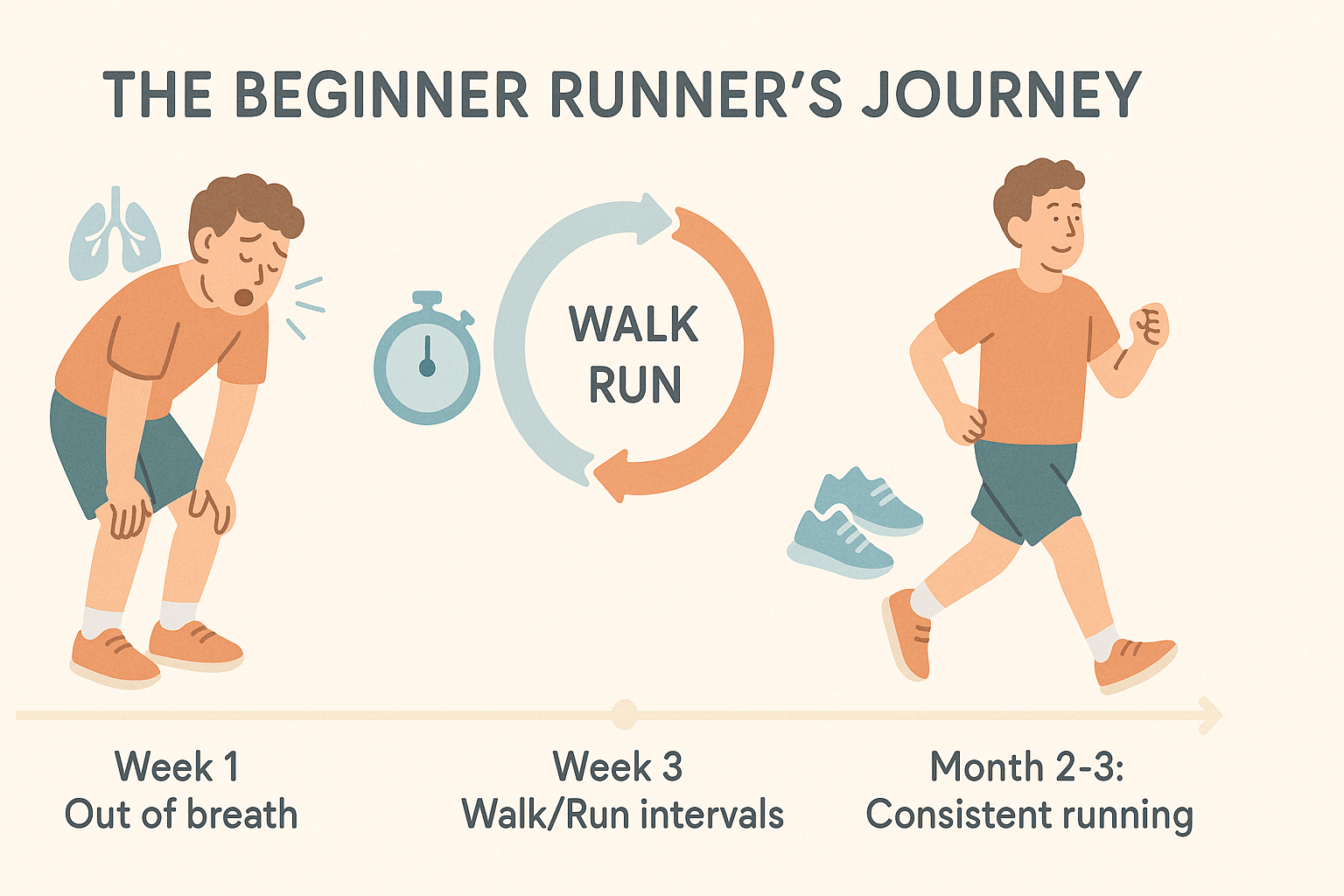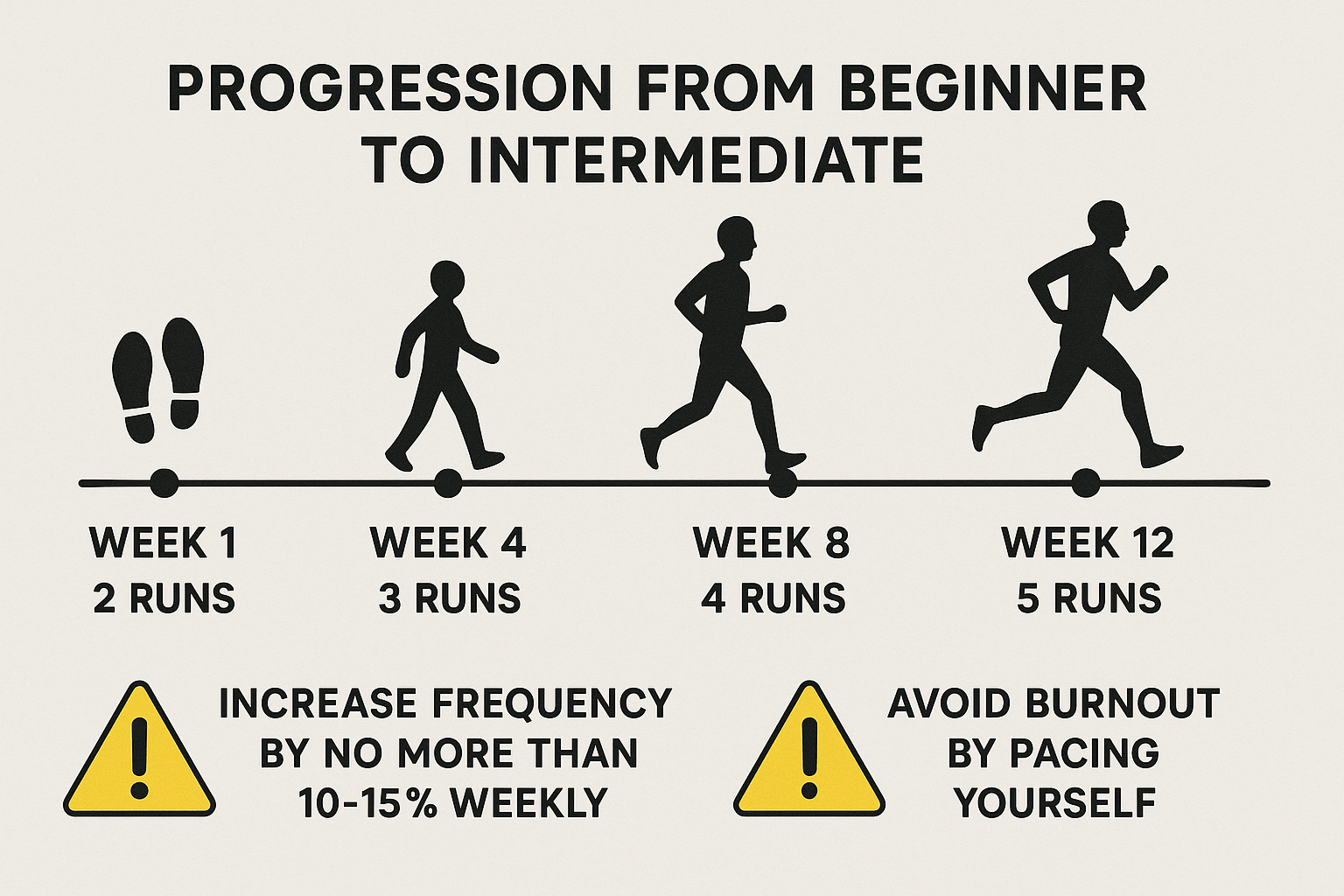Ever collapsed after a run thinking you’re done?
I used to—until I learned these recovery tricks the hard way.
Let me save you the trouble and show you how to actually maximize your post-run routine, so you can recover faster, feel better, and avoid the mistakes that could mess up all your hard work.
Mistake #1: Why Stopping Cold After a Run Is Dangerous
It took me a while to realize this one.
Right after a hard run, all I wanted to do was to stop and catch my breath, maybe even collapse into a heap on the floor. But that sudden halt? It’s a mistake.
Trust me, it’s like slamming on the brakes in a car without slowing down first.
All the blood that was pumping through your body starts to pool in your legs, and—well, you’ve probably felt that dizziness or lightheadedness. If not, count yourself lucky, because it’s a miserable feeling.
The Fix:
Slow down.
Gradually ease out of your run by slowing to a jog, then walking it out.
Do it for at least 5-10 minutes.
Focus on your breathing, hydrate, and stretch. Don’t skip the cool down or you’ll be asking for trouble.
Mistake #2: Skipping the Stretching (Yes, It’s Important!)
I get it—you’re tired, your muscles are shot, and stretching might feel like the last thing you want to do.
But here’s the reality: skipping post-run stretches is like not icing a bruise after you bang it on the corner of the desk.
It’s a missed opportunity to aid in recovery, improve flexibility, and avoid tightness tomorrow.
The Fix:
Do some static stretches right after your run, focusing on those tight muscles like your quads, hamstrings, calves, and hip flexors. Hold each stretch for at least 30 seconds, and feel your body saying, “Thank you!” You can’t rush recovery.
Mistake #3: Not Rehydrating Properly (Water, Not Just Coffee!)
Post-run hydration is a big one. I’ve been guilty of reaching for a coffee or a snack, thinking I’d “recharge” that way. But the truth? Your body’s thirsty for water—or something with electrolytes. Skipping hydration is like forgetting to refuel your car after a long trip. You won’t get far without it.
The Fix:
As soon as you finish your run, grab some water—like, now. If it’s a hot day or you’ve been sweating buckets, go for a sports drink with electrolytes. Aim for half your body weight in ounces of water each day.
If your pee’s darker than pale yellow? Time to drink up.
Mistake #4: Staying in Your Sweaty Clothes (Don’t Be That Guy)
You ever hear that term “fresh as a daisy”? Yeah, well, that’s not gonna be you if you stay in your sweaty gear after a run. I’ve been there, thinking I’d just chill in my soaked clothes, and let me tell you—it’s a breeding ground for bacteria.
That discomfort? It’ll catch up with you, trust me.
The Fix:
Change immediately. Keep a fresh set of clothes with you.
If you can’t shower right away, baby wipes or wet wipes are your new best friend.
Get out of those clothes before you end up with a rash or some nasty post-run skin irritation.
Mistake #5: Reaching for Junk Food
I’ve been there—run a solid 5K, burn a ton of calories, and then think it’s time to devour a big plate of greasy comfort food.
But here’s the truth: your body just burned a ton of fuel, and now it needs high-quality nutrients to recover, not junk that’ll make you feel sluggish.
The Fix:
Opt for a solid snack or meal with carbs and protein.
A banana with almond butter, Greek yogurt with berries, or even a turkey sandwich will help.
Skip the sugary stuff. Your body deserves better than empty calories—it deserves the fuel that’ll help you recover and get stronger.
Mistake #6: Collapsing Into the Couch After Your Run
After a tough run, the couch seems like the perfect place to be, right?
But here’s the catch: lounging for hours after your run is like parking your car after a long drive and never turning the engine off. Your body’s still working and needs blood circulation to recover.
The Fix:
Get moving!
Do a bit of foam rolling, some light yoga, or even just walk around. Anything to keep the blood flowing. Your muscles will thank you, and your recovery will be that much better.
Mistake #7: Not Tracking Your Progress
I know some of you think that if you’re just running, that’s enough, right? But if you’re not tracking your mileage, pace, and how you feel post-run, then you’re just running blind.
Keeping track gives you a roadmap to where you’re going and where you need to improve.
The Fix:
Start tracking your runs—mileage, pace, recovery, nutrition. Use an app, a journal, or even an Excel sheet. Keeping a log helps you stay accountable and lets you see your progress. It’s a game-changer.
Mistake #8: Not Getting Enough Sleep
I’ll be honest—I’ve had my fair share of sleepless nights, especially during intense training periods. But here’s the kicker: sleep isn’t a luxury, it’s a necessity. If you’re skipping sleep, you’re shortchanging your recovery.
You need that sleep to rebuild muscle and boost performance.
The Fix:
Aim for 7-9 hours of solid sleep.
This is your recovery time—when your muscles repair and your body gets back to 100%. Trust me, your legs and your performance will thank you for it.
Conclusion:
There you have it—8 post-run mistakes that could be holding you back. You put in the miles; now give your body the chance to recover properly.
With these fixes, you’ll bounce back faster, run stronger, and avoid injuries. So, next time you finish a run, don’t just stop—cool down, hydrate, stretch, and refuel like the pro you are.
Now go out there and crush it. Every step counts, and recovery is just as important as the run itself.


